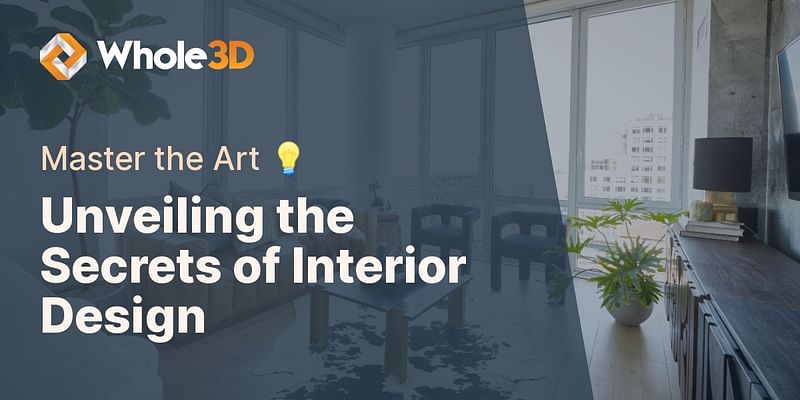Finn Cummings is a seasoned craftsman specializing in carpentry and 3D wall panel installations. With a solid foundation in woodworking and building construction, he has been an indispensable part of the Whole 3D team for over eight years, delivering top-quality installation services to clients.
Interior decoration and design is the art and science of enhancing the interior of a space to achieve a more aesthetically pleasing and functional environment. It involves carefully selecting and arranging furniture, color schemes, lighting, and decorative elements to create a desired atmosphere and meet the needs of the occupants.
When it comes to interior decoration and design, there are several key principles and elements to consider. Let's break them down:
1. Functionality: The first step in any design process is to understand the purpose and function of the space. Are you designing a living room for relaxation, a kitchen for cooking, or a bedroom for rest? By identifying the primary function of the room, you can determine the layout and select furniture and decor that will best serve that purpose.
2. Space Planning: Space planning involves arranging furniture and other elements in a way that optimizes the flow and functionality of the room. Consider the size and shape of the space, as well as any architectural features or constraints. Create zones for different activities and ensure there is ample space for movement and circulation.
3. Color and Texture: Color and texture play a crucial role in setting the mood and creating visual interest in a room. Choose a color palette that reflects your personal style and the desired atmosphere. Warm colors like red and orange can create a cozy and inviting feel, while cool colors like blue and green can evoke a sense of calm. Experiment with different textures, such as smooth surfaces, rough textiles, or textured wall panels, to add depth and tactile appeal.
4. Lighting: Lighting is a powerful tool in interior design. It can enhance the ambiance, highlight focal points, and improve functionality. Consider a combination of natural and artificial lighting sources to create a well-lit space. Use task lighting for specific activities, ambient lighting for overall illumination, and accent lighting to highlight artwork or architectural features.
5. Furniture and Accessories: Select furniture and accessories that complement the overall design and serve the intended function. Consider the scale and proportion of the pieces in relation to the room size. Mix and match different styles and materials to create visual interest. Don't forget to incorporate storage solutions to keep the space organized and clutter-free.
6. Personalization: Make the space your own by adding personal touches and meaningful decor. Display artwork, photographs, or sentimental objects that reflect your personality and interests. Incorporate plants or natural elements to bring life and freshness to the space.
Remember, interior decoration and design is a creative process, and there are no hard and fast rules. It's about finding a balance between functionality and aesthetics, and creating a space that reflects your unique style and meets your needs. So, let your imagination run wild, and have fun transforming your space into a place you love to be in.















